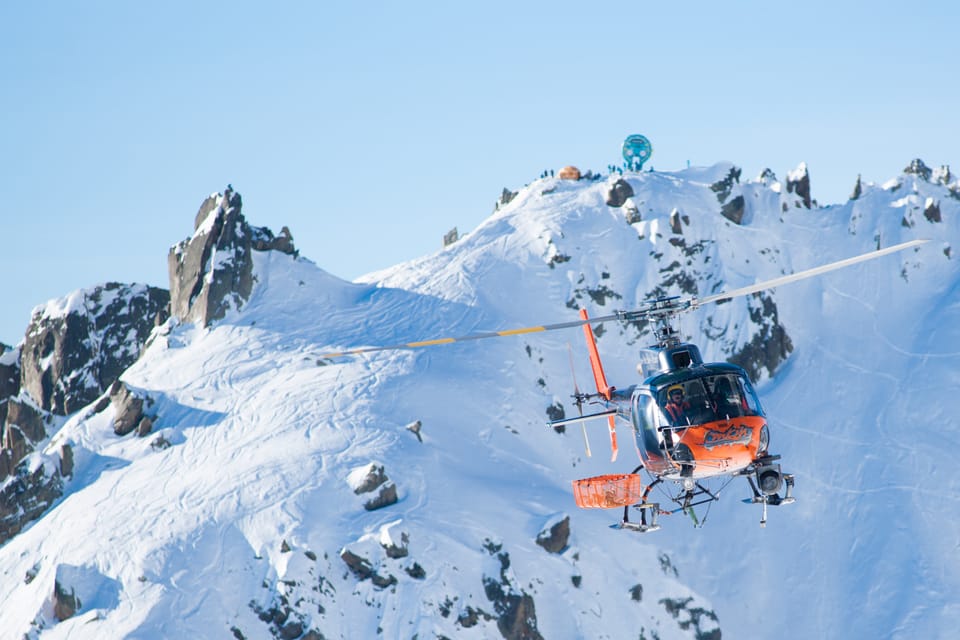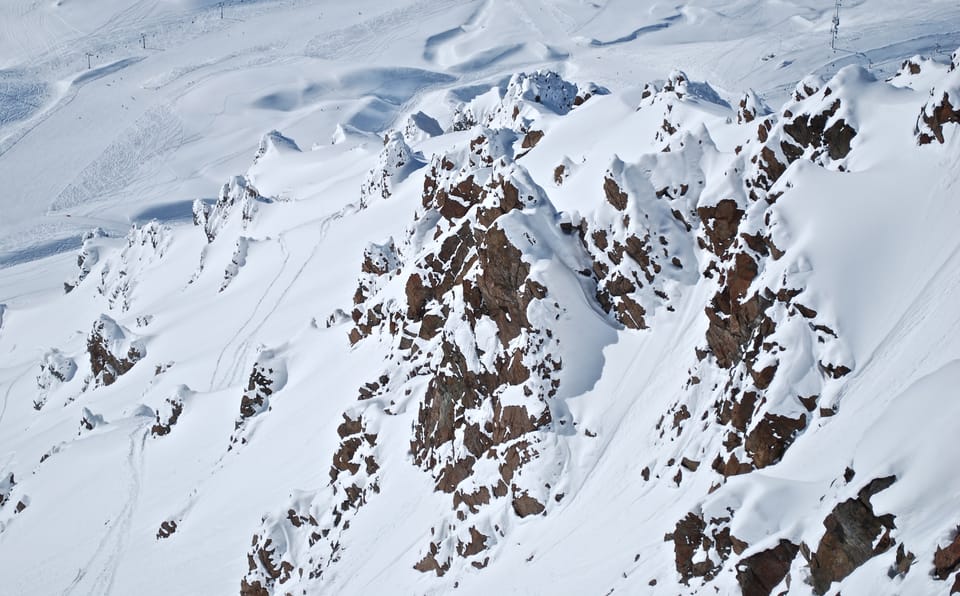Ski Japan: February update & focus on Hokkaido
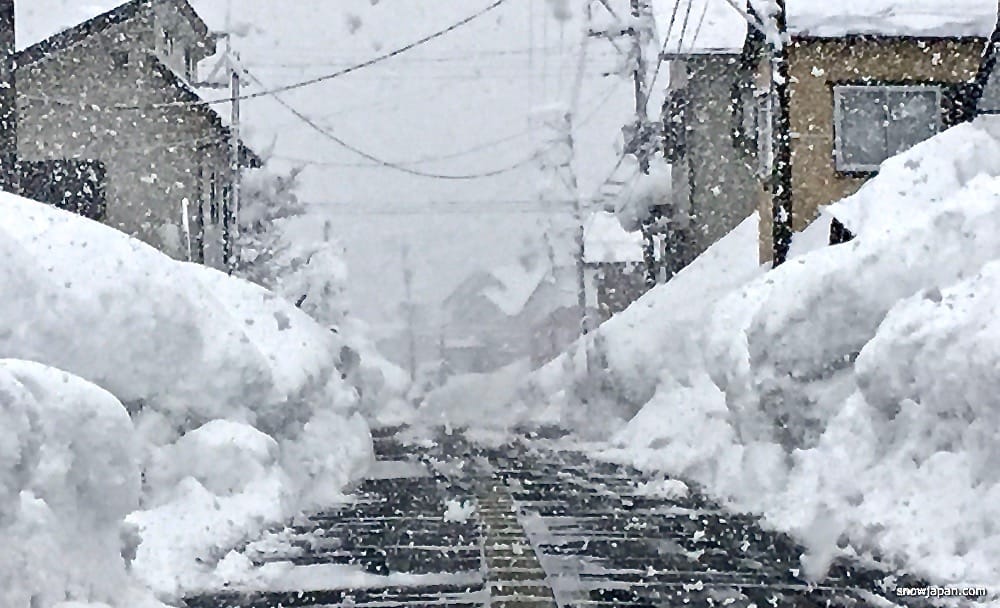
Last time you might remember that I reported on a very good start to the snow season in Japan – in particular, Hokkaido. Niseko base had received around 6m of snowfall by the end of December and by early February that had increased to over 9m, with considerably more than that on the slopes.
Snowfall consistency may not have been quite as impressive in January and the first part of February, but I’d say those numbers are still pretty good – and as this article goes online there are some exciting conditions to be enjoyed.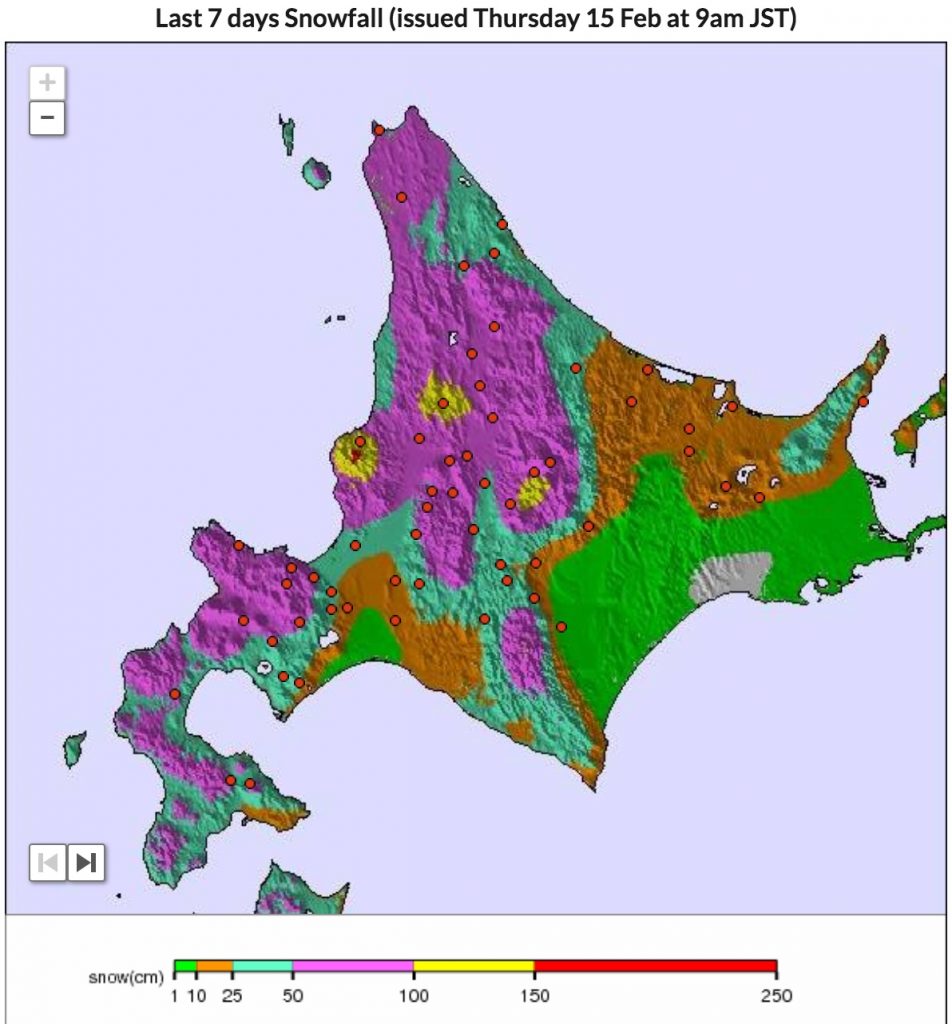
It’s very difficult to generalise the ski season in Japan as a whole simply because the popular/larger ski resorts are located over such a huge area, but I think it is fair to say that most regions of the country have enjoyed a generally good season in terms of snowfall so far. And that means a lot of snow. Some areas, notably the Hokuriku region on the main island of Honshu, have experienced record snowfall numbers. That has been really good for the ski resorts in the area but less so for the cities and low-lying areas that are not so well equipped for heavy snowfall. Locals have been struggling!
We are deep in the middle of the Japanese snow season now. Most ski hills are open around the end of March and early April with a fair number continuing into the ‘Golden Week’ holidays in early May, and some even beyond that.
Anyway, for a closer detailed ongoing check on the season in popular snow regions, here’s your daily resource:
http://www.snowjapan.com/japan-daily-snow-weather-reports
Over the coming run of articles, I will be taking a look at some of the main and most popular ski resort regions in Japan and it is probably appropriate to start with the northern island of Hokkaido.
Hokkaido is the second largest island of Japan, as well as being the largest and most northernmost ‘prefecture’ – though, for reasons I won’t go into here, it is not actually referred to as ‘Hokkaido Prefecture’… simply Hokkaido. No other prefecture has more ski hills than Hokkaido – there’s over 100 of them (!) and they are literally scattered across most of the island. Most of these ski hills are extremely small local facilities with just one or two simple ski lifts and are probably only visited by locals.
Some of them are even free to use!
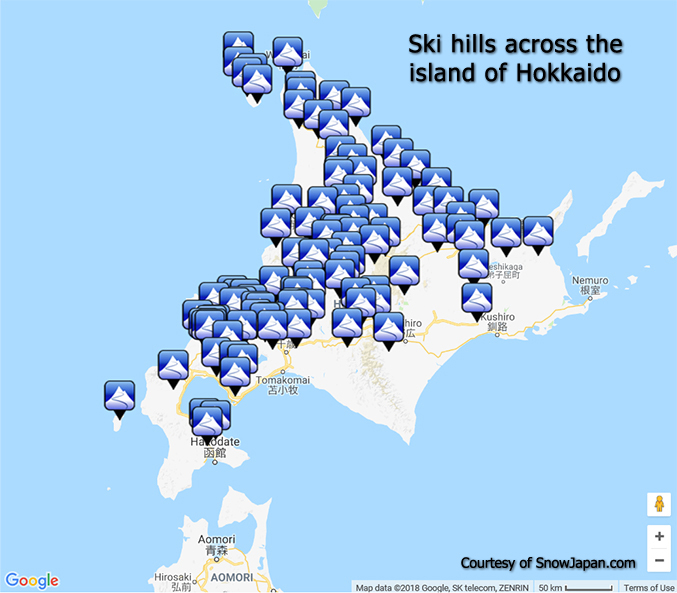
At the same time, some of the most famous ski resorts in Japan are also located in Hokkaido in regions to the west and east of the capital city of Sapporo. You may recall that the first Winter Olympics in Asia was hosted by Sapporo in 1972. (Don’t go looking for the ski course on Mount Eniwa where the Alpine skiing events were held though – it was a temporary purpose-built facility and has been returned to nature). Sapporo is fine city and the Snow Festival is another popular highlight for many taking the trip to Hokkaido in winter.
The most famous ski resorts in Hokkaido are located in Niseko and Furano.
Niseko is the name of a town. The four lift-connected and ticket-sharing ski resorts on the eastern and southern slopes of Mt Niseko Annupuri – collectively known and marketed as ‘Niseko United’ – are located within the borders of Niseko town and the neighbouring Kutchan town. Thirty years ago, these ski resorts were in many ways like most other ski resorts throughout Japan. They were already popular and known for some of the best – if not the best – quality snow conditions, but not particularly noteworthy other than that.
There have been some huge changes since then and anyone who has not visited Niseko for a long time would be very surprised at what it has become today. In particular, over the last decade or so, there has been a huge amount of investment and development, and significantly from overseas interests. Luxury accommodation and other facilities have been appearing at an impressive rate, driving prices up in the process.
Niseko has also been relatively forward-thinking with backcountry activities by introducing Niseko Rules and a gate system that goes beyond the main ski courses. That kind of thing is not something that has been given much priority at all at most Japan ski hills until recent years. (More on that in a future article).
The region has benefitted from some serious marketing efforts as well. Initially, it became popular with Australians and in more recent years there has been a big increase in visitors from nearby Asian countries and beyond. It is now surely the most international feeling ski resort area in all of Japan. So much so that some people argue that it doesn’t even feel much like Japan anymore. And while heated arguments can easily be started over that particular point, it is difficult to deny that Niseko is unique and offers a very different experience from most other ski hills in Japan. You will read and hear a lot of exciting narrative coming from the Niseko marketing machine, but when it is on form – which is often – it truly can be incredible and is definitely worth a look.
For many foreign visitors, Niseko has been the introduction point to Japan and skiing or snowboarding in the country and it remains extremely popular and is still growing. As Japan becomes more popular, though, people are increasingly looking to find other experiences – whether it be for their first visit or for repeat visits. Places that are less crowded, less developed and offering more of a ‘traditional Japan experience’ (meaning different things to different people) are gaining ground.
Furano is located in the central region of Hokkaido, to the east of Sapporo city, and has always been one of the classic ski resorts in Japan and popular with Japanese skiers. While in recent years it is also becoming increasingly popular with foreign visitors, it retains a more traditional feel – especially when you compare with what is going on in Niseko.
Other ski resorts in Hokkaido that are enjoying increased popularity with the inbound market include Rusutsu and Kiroro, both of which are within an hour from Niseko.
In my next article, I am going to move on from Hokkaido to the main island of Honshu to look at another very popular snow region of Japan.
I’ll also update you on the season… which (as always) is flying by way too fast.
Mata ne!


